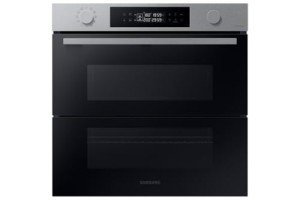The Rise of Built-In Ovens: A Comprehensive Guide
On the planet of contemporary cooking areas, built-in ovens have actually carved a specific niche on their own, changing both the functionality and aesthetic appeal of cooking areas. This article explores the various advantages of built-in ovens, their setup considerations, and a contrast with traditional freestanding models.
Comprehending Built-In Ovens
Built-in ovens are designed to be integrated effortlessly into kitchen cabinetry, using a smooth and advanced look. Unlike freestanding designs, which rest on the floor, built-in ovens are mounted at eye level or under counter tops, making them ergonomic and simple to gain access to.
Kinds Of Built-In Ovens
Built-in ovens can be found in a number of types, each catering to different cooking needs and preferences. Here's a quick summary:
- Single Built-In Oven: Ideal for smaller sized cooking areas, providing adequate cooking area for the majority of requirements.
- Double Built-In Oven: Offers different compartments for cooking, perfect for larger families or those who frequently captivate guests.
- Steam Ovens: Utilizes steam cooking for much healthier meals, maintaining nutrients and moisture.
- Convection Ovens: Equipped with fans to distribute hot air equally, guaranteeing much faster and more consistent cooking.
| Type | Description | Best for |
|---|---|---|
| Single Built-In | One spacious oven compartment | Little families |
| Double Built-In | 2 compartments for simultaneous cooking | Large families |
| Steam Oven | Steam-based cooking technique | Health-conscious cooks |
| Convection Oven | Fan-assisted cooking for even heat circulation | Those who bake typically |
Benefits of Built-In Ovens
Visual Appeal
Built-in ovens offer a smooth, integrated appearance that improves the general appearance of a kitchen. integrated gas oven and hob packages are available in various designs and surfaces that can complement existing cabinetry and design, developing a streamlined and cohesive look.
Space Efficiency
Created to fit seamlessly into kitchen designs, built-in ovens can save important flooring area, making them ideal for smaller sized kitchens. By conserving space, house owners can benefit from extra storage choices or more counter area for food preparation.
Ergonomics
Installing ovens at eye level eliminates the requirement to bend down, minimizing pressure when examining food or getting rid of hot dishes. This ergonomic advantage is especially helpful for people with mobility challenges.
Adaptability
Built-in ovens typically feature a range of cooking modes and functions, from convection cooking to self-cleaning alternatives, giving users versatility in their cooking approaches.
Energy Efficiency
Modern built-in ovens are usually developed to be more energy-efficient than traditional designs. Functions such as much better insulation and advanced heating components help in reducing energy intake.
Setup Considerations
While the advantages of built-in ovens are considerable, specific aspects need to be thought about before going with this kitchen upgrade:
- Space Requirements: Built-in ovens require specific area measurements in terms of width, height, and depth. Precise measurements must be taken into consideration to avoid installation issues.
- Electrical and Gas Hookups: Built-in ovens might require specific electrical wiring setups or gas connections. Qualified specialists need to manage this setup to ensure security and compliance with local codes.
- Cabinetry Compatibility: The style and structure of existing cabinetry needs to be evaluated. Built-in designs might require modifications to cabinets, or brand-new kitchen cabinetry may require to be created to accommodate them.
- Expense: Built-in ovens generally come at a premium price compared to freestanding designs. House owners should evaluate their budget plans appropriately and consider long-term advantages.
Setup Steps
Below are the fundamental steps associated with installing a built-in oven:
- Preparation: Measure the area and get rid of old appliances if required.
- Electrical/Gas Setup: Ensure the necessary electrical or gas connections are all set and inspected for compliance.
- Cabinet Adjustment: Modify kitchen cabinetry as needed to fit the built-in oven.
- Positioning: Carefully position the oven into the designated space and level it.
- Connection: Connect the oven to power or gas and make sure all fittings are secure.
- Evaluating: Turn on the oven to ensure it runs correctly.
Regularly Asked Questions (FAQs)
1. Are built-in ovens easy to install?
While basic installation can be handled by a useful person, it is advisable to employ an expert, particularly when handling electrical or gas fittings.
2. Can I replace my freestanding oven with a built-in oven?
Yes, but it will require careful measurement and potentially some modifications to your existing cabinets to fit the built-in model.
3. How do built-in ovens impact kitchen resale worth?
Built-in ovens can enhance a kitchen's appeal, typically making it more appealing to potential purchasers, thereby supporting a greater resale worth.
4. Are built-in ovens more pricey than freestanding models?
Usually, built-in ovens are more pricey due to their design and functions. Nevertheless, their boosted looks and functionality might validate the expense for numerous house owners.
5. What are the best brand names for built-in ovens?
Some recognized brand names include Bosch, Miele, KitchenAid, and Electrolux, each known for their quality and development.
Built-in ovens represent a considerable leap in kitchen technology, providing a blend of design, effectiveness, and functionality. While they need careful consideration regarding space, setup, and cost, the benefits they offer make them an attractive choice for modern-day homeowners. Whether updating an existing kitchen or designing a new one from scratch, built-in ovens can elevate the cooking experience and enhance general kitchen visual appeals. From performance to elegance, they genuinely embody the very best of contemporary cooking options.

